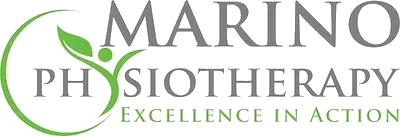How Many Days a Week Should I Do PT?
When it comes to physical therapy sessions, the frequency can vary from person to person. Your therapist and you will collaborate on a schedule that best meets your individual needs and goals.
Establishing a regular physical therapy schedule can help you create the habit of feeling good and progressing toward your goals. This is especially essential if you wish to avoid future injuries or recurring pain.
1 – 3 days a week
When it comes to physical therapy, the number of days necessary will depend on your injury or condition. Your physical therapist will collaborate with you in determining what works best for both your schedule and body type.
Usually, patients begin with one or two sessions per week; however, if you’re in pain or on a long road to recovery, your therapist may recommend three visits per week.
Follow your PT’s instructions closely and don’t try to overdo it. Repetition makes the exercises feel more natural, which can make them easier for you to maintain over time.
Your therapist may recommend including some rest days in your program. This gives your body time to repair and rebuild muscles you’ve worked on previously, while also enabling you to prepare for the next round of exercises without experiencing any pain or discomfort.
4 – 6 days a week
If your doctor has recommended physical therapy, make sure to attend as many sessions as they suggest. Depending on your injury or health condition, this may involve one to several times per week sessions for several weeks or months plus an at-home exercise program.
In addition to your treatment sessions, be sure to take time out for rest days. These will enable your body to recover and heal properly so that you can continue with your PT regimen without any setbacks.
Fitness professionals often enjoy a more flexible schedule and the freedom to schedule treatments whenever it suits them. This provides them with an opportunity to meet with you at an advantageous time, ensuring you get the most out of your sports rehabilitation treatment plan.
If you are prepping for a fitness test, your physical therapist (PT) can help set up progressive exercises tailored towards your test objectives. Doing this will maximize the benefit of each workout and reduce anxiety on test day so that you can give it your all.
7 – 10 days a week
Physical therapy is an invaluable way to get back on your feet after an injury or chronic pain issue, and it also helps prevent future issues and injuries.
After your initial appointment, the therapist will create a plan tailored to fit your individual needs. They take into account your busy schedule and lifestyle when determining how many sessions are necessary in order to make progress.
Depending on the severity of your condition, you may be required to visit a therapist’s office one or more times each week. Alternatively, you could work on exercises at home that can be completed daily.
Ultimately, it’s essential that you adhere to your therapist’s instructions. You will be provided a list of exercises to do and how often for maximum benefits.
If you experience any discomfort while performing these exercises, don’t hesitate to stop and speak with your therapist. They are more than happy to answer any queries and explain your treatment plan in more detail.
11 – 14 days a week
Research has consistently demonstrated that the most beneficial physical therapy isn’t limited to one office or time slot. Scheduling multiple sessions over a week can promote better health and reduce hassle for patients, their families and caregivers alike. For optimal recovery, your treatment plan should incorporate stretching, mobility training and at least an hour of low-impact exercise. Utilizing appropriate equipment can also significantly boost your chances for success during recovery. For instance, having the correct equipment can help ensure proper positioning and technique during a sit-up. Furthermore, having such items readily accessible reduces time spent striving to achieve good posture. As it may be challenging to locate all these items simultaneously, creating an organized program is paramount for patients’ best outcomes.
If you have any questions or would like to schedule an appointment, feel free to contact us today. Our team of specialists is here to help you with all your foot and ankle pain needs.



